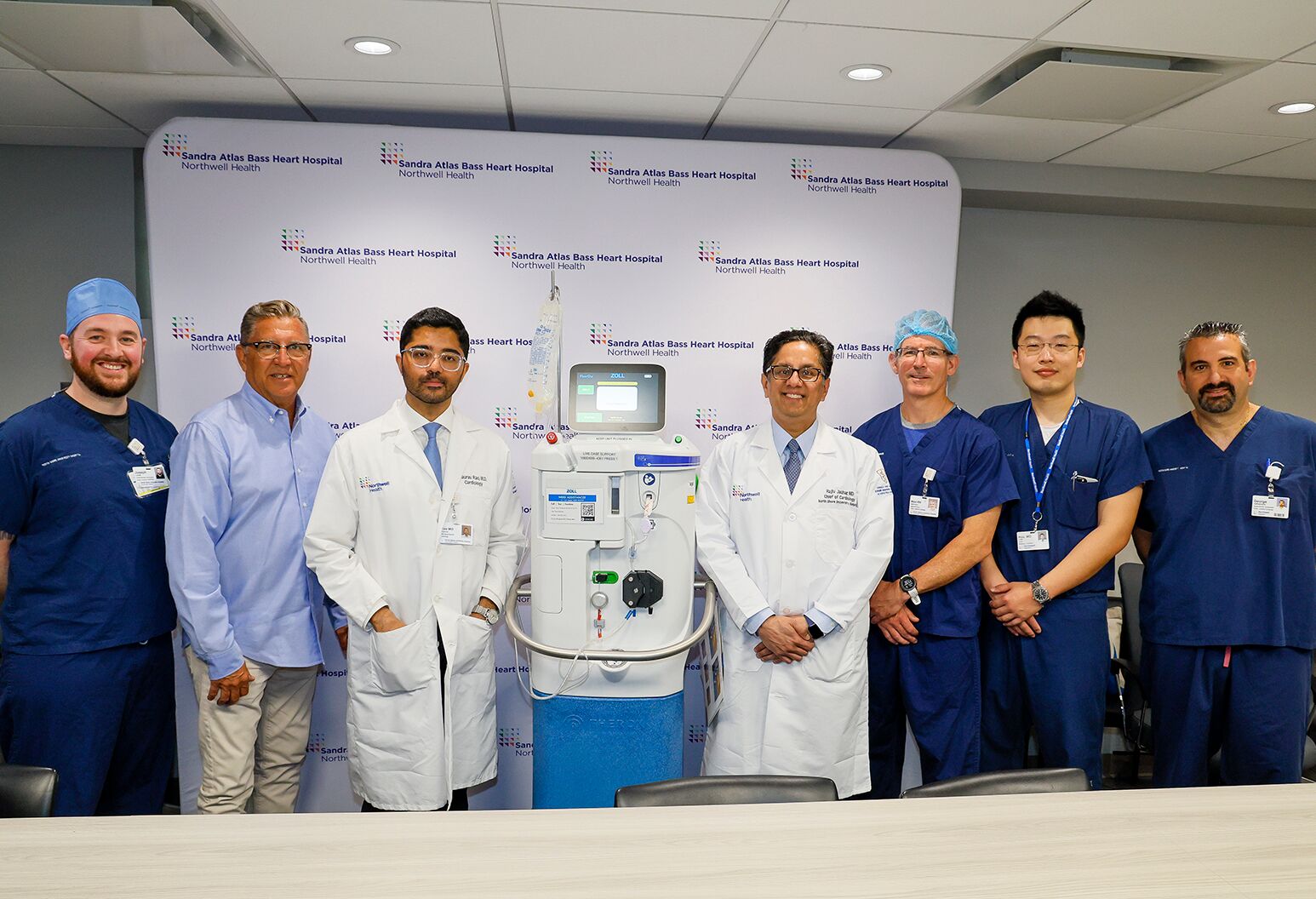Our representatives are available to schedule your appointment Monday through Friday from 9am to 5pm.
For a Northwell ambulance, call
(833) 259-2367.

It was the first day of his golf season and 64-year-old Kevin Kapela was looking to get back into the swing, following up from a stunning hole-in-one from the year before.
“It was a beautiful day, first time out for the year,” Kapela said. He was on the ninth hole at Christopher Morley Golf Course in Roslyn, NY. It was the longest drive of the day.
He set the ball on the pin and, as he put it, "swung for the stars." But just as the ball took flight, Kapela almost hit the ground. “I felt like lightning went through my arms and down through my elbows,” he explained. Without hesitating, Kapela gathered his clubs and headed for his car.
“I figured this is what a heart attack feels like — a mild heart attack. I didn’t think much of it really,” he said.
While he thought the heart attack was probably minor, he was actually in the throes of a widowmaker heart attack.
The heart's largest artery is called the left anterior descending (LAD) artery and supplies blood to a vast area of the muscle. When blocked completely, it causes a massive heart attack, commonly referred to as a widowmaker heart attack. Timely treatment is critical to survival. Only 12% of people suffering from a widowmaker heart attack survive before making it to the hospital, according to the American Heart Association.
Despite his sudden, massive heart attack, Kapela drove himself to nearby North Shore University Hospital’s (NSUH) Sandra Atlas Bass Heart Hospital. “I made it there in five minutes and pulled right into the ambulance bay,” he said, admitting it wasn't the smartest move to drive himself in that condition.
Within 10 minutes, An EMT quickly rushed him into the emergency department and then straight to the cardiac catheterization lab for emergency treatment.
NSUH interventional cardiologist, Gaurav Rao, MD, inserted a stent to prop open Mr. Kapela’s left anterior descending (LAD) vessel to restore blood flow to the heart muscle. “It was your classic massive heart attack,” Dr. Rao explained.
Rajiv Jauhar, MD, chief of cardiology at North Shore University Hospital said, “the goal, from when a patient shows up in the emergency room is to open up that artery in 90 minutes.” In Kapela’s case, less than 40 minutes had passed from the time of his first symptom, to the time on the catheterization table.
Fortunately for Kapela, the type of heart attack and time to treatment made him a candidate for a novel treatment to help preserve muscle after a heart attack called TherOx.
Specifically targeted for this type of cardiac event, Sandra Atlas Bass Heart Hospital is the first in New York to introduce this therapy. After the vessel is opened, TherOx treatment takes a patient’s blood, super oxygenates it and returns it directly to the site of a heart attack, helping prevent irreversible damage to the heart muscle, increasing blood flow and decreasing risk of long-term heart failure and other complications.
"This elevated oxygen concentration enables increased diffusion of oxygen to ischemic tissue," according to the manufacturer's website.
Cardiologists liken this new therapy to a hug for the heart because it brings that oxygen-rich blood, via catheter, to the millions of micro-vessels in the organ and helps to restore normal function.
Taking about an hour, TherOx uses the same pathway as the catheter to treat the heart attack, saving time and need for additional access — providing all care in one sitting.
Before TherOx treatment, Kapela’s left ventricular ejection fraction (heart function) was down to around one-half of what it should be. The team repeated the same test 48 hours later. “When we repeated the test, his function was nearly back to near normal. That’s remarkable and I’m expecting it to improve even more on good medical therapy,” Dr. Rao said.
The Centers for Disease Control and Prevention say a heart attack occurs every 40 seconds in the United States, which amounts to 805,000 heart attacks each year.
For Kapela, TherOx was just what the doctor ordered. As far as driving yourself to the hospital “I do not recommend driving yourself if you’re having a heart attack,” Dr. Jauhar stressed. “The best and quickest way to get to a hospital in any emergency is to call 911.”
“I’m back to walking 2 miles a day, looking forward to the Indy 500 at the end of May and a trip to Italy in July and playing with my grandchildren – I’m always the quarterback,” Kapela said excitedly.
“I was fist pounding all of these guys…the heroes-they saved me,” he emotionally retold. “It’s a miracle, I’m a lucky guy, I’m lucky to be here. I feel better today than I have in 10 years.”
Our representatives are available to schedule your appointment Monday through Friday from 9am to 5pm.
For a Northwell ambulance, call
(833) 259-2367.